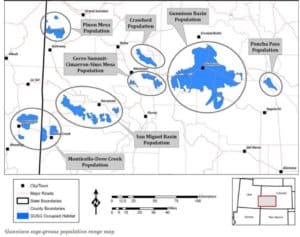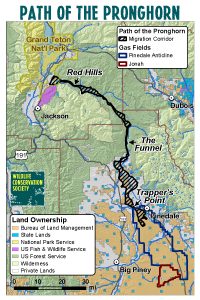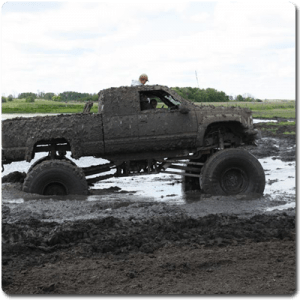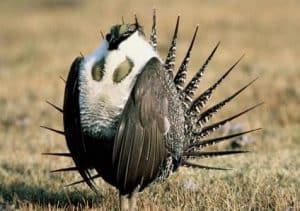A recent Rocky Mountaineers (Forest Service retiree organization) annual gathering included a field trip to the Buffalo Gap National Grassland. Wall, South Dakota is also the home of the National Grasslands Visitor Center that tells the story of the National Grasslands.. an important part of our country’s natural heritage. For those of you who like field trips, you can get some of the fun without the travel. Travis Mason-Bushman (with the hat) and all those young people we met are outstanding at telling their stories and answering questions. They are dedicated, committed, professional with a depth of knowledge and experience. I know I can shuffle off this mortal coil and these folk will take care of the National Grasslands and Forests just fine.
One of the videos has some breathing at the beginning, which is distracting, but it goes away.
The story of the black-footed ferret recovery is very interesting, including how they are being managed to protect from disease, and their genetics. The black-footed ferrets that are alive today in the United States come from a foundation of seven ferrets.There’s even a discussion in the video of using high-tech techiques.. cloning.. to increase genetic diversity. Tissue samples of Willa, a captured ferret from Meeteetse, were cryopreserved when she passed away. They were thawed and used to produce a cloned ferret who was an exact clone of Willa. Unfortunately she (Elizabeth Ann) required surgery and cannot be bred. If you’re interested, this from the Meeteetse Museums has all the juicy and technical details. The mechanisms that organisms have to continue to live, thrive and survive small population sizes are not really understood. Estimates of MVP are based on many assumptions of things we don’t know and don’t understand. It’s a mysterious human process by which “best guess at this time” is transmuted into “scientists tell us” and then directly into policy.
This is the story of some dispersed recreation challenges the District has. This area is adjacent to the Badlands National Park, which has limited camping, and camping has mushroomed. While the District has little recreation funding or staff; they are doing what they can.
Travis does a great job, as always, explaining the history of the Grasslands. I don’t see it exactly the same way, though. Travis says something like “people determined that the land was best left alone” which I don’t think is how people thought in the 1930s. They wanted to get vegetation back.. hence reseeding and shelterbelts, so that the land could be used for grazing. The idea was also to show neighboring farmers better practices.
Here’s an example from a Pawnee National Grassland history:
The area along Crow Creek near Briggsdale was the first reclamation and demonstration plot in this area. Seventy acres of meadow improvement began with the construction of two dams and three diversion ditches to spread the flood water over the meadows and provide limited irrigation on other areas. Throughout the other acquired areas, existing fences were torn down, moved or new fences constructed to surround an economically manageable pasture. Springs were developed and wells dug. Windmills were erected and “catch basins” constructed to collect as much run-off water as possible. The policy was “no cow would have to go more than three-quarters of a mile for water.” The plowed and denuded lands were planted to mostly crested wheatgrass, an introduced species from Russia which is well adapted to our climate and is palatable to livestock. Trees were planted to form wind breaks and provide habitat for wildlife. Within two years, the planted grasses revegetated the plowed areas and grazing was allowed on a limited basis.
And
This was not accomplished without trials, anger and frustration. Attempts were made to have the land returned to private ownership, but were defeated. The deep-seated individualism of the westerner made it difficult for them to accept a change from the old ways. Successful demonstrations and evident restoration of the land occurred and gradually the new, proven methods of land management were accepted by most of the population, both association members and nonmembers.
One of the reasons I bring this up is that it reminds me of watershed restoration which seems agreed upon and in some senses easier than some of the ideas we have now about “ecological restoration” which requires, in some cases, attempting to bring back all the plants and animals that previously lived there (at the correct densities and age structures, but of course not the same genetics). “We don’t want dirt to blow away and we want vegetation to cover the soil, hopefully something edible for cows” is a water and soil based restoration.. and fast forwarding, if we were to focus on these basics (soil, water, and air) and let the plants and animals fall where they may, the work of restoration would be simpler. Then hydrologists and soil scientists would be in charge instead of economists, endangered species biologists, historic vegetation ecologists, or climate modellers. It would be an interesting thought experiment, anyway.
In researching this post, I ran across an interesting website called the Encyclopedia of the Great Plains. Many interesting topics to browse there, and here’s the entry for climate.
The Great Plains, therefore, has a large range in both annual and daily temperatures. During the midwinter months (January and February), when cold, dry air from central Canada dominates, temperatures are very cold, with mean temperatures varying from 40ºF across the Southern Plains to as low as 10ºF across the Canadian Prairies. During midsummer (July and August), when the Plains are dominated by either warm, moist air from the Gulf of Mexico or warm, dry air from the Southwest, mean temperatures increase to approximately 80ºF through the Southern Plains and approximately 66ºF across the Canadian Prairies. This gives the region a much larger range in annual temperature than is found elsewhere in North America. For example, the range in mean monthly temperature between January and July in Omaha, Nebraska, is approximately 56ºF, while in Philadelphia, Pennsylvania, and San Francisco, California (each at a similar latitude), the ranges are 46ºF and 14ºF respectively.
***
The year-to-year variability in temperature and precipitation across the Great Plains is very large. This variability is especially evident in the recurrent problem of drought. The very warm and often dry summer weather that is characteristic of the Plains leads to high evaporation and transpiration (water loss from plants) rates. Soils are often depleted of their moisture, leading to stressed natural and cultivated vegetation. A measure of the lack of available soil moisture for plants, the soil moisture deficit, has been calculated for the entire Great Plains region for the period 1895 through 1994. From this it is clear that the Plains as a whole has undergone recurrent periods of drought over the last century, especially during the 1930s (the Dust Bowl years) and the 1950s. The large annual (within one year) and interannual (year-to-year) variability of Great Plains climate makes the region a natural laboratory for studying the effects of climate variability on a host of problems associated with the interaction of humans with their environment.
Perhaps the people, animals and plants of the Great Plains have something to teach us about adapting to any changes in climate and climate variability.






